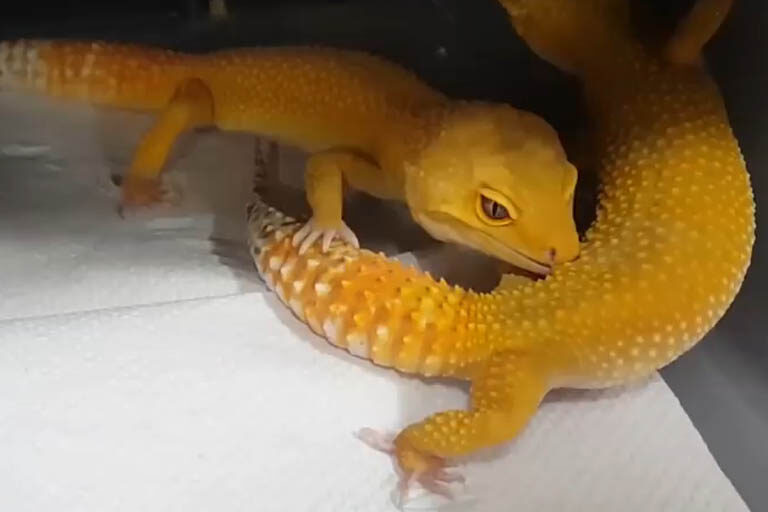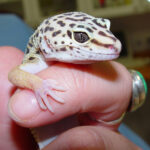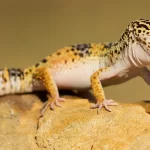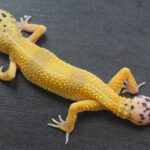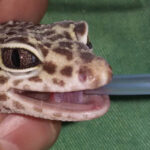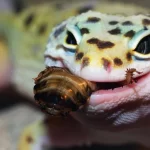Breeding behaviour is often seen when adult male and female Leopard geckos are housed together. This unique, and often bizarre, behaviour is mostly visible at night during the breeding season of Leopard geckos.
Introduction to breeding behaviour in Leopard geckos
Leopard gecko breeding behaviour is seen in sexually matured individuals during the breeding season. Breeding is seasonal. Sexual maturity in Leopard geckos is generally reached at about 9 to 10 months of age. The breeding season for Leopard geckos is usually the four to five months period after winter (i.e. early spring to autumn).
Although breeding behaviour is mainly seen between male and female Leopard geckos during courtship, similar behaviours are also seen between fighting males. Breeding behaviour is divided into two phases, namely courting and copulation.
Male Leopard gecko biting a female during courtship. This behaviour is commonly seen during the breeding season. Image 정브르 (CC BY YouTube)
Also see
Sexing a Leopard gecko
Leopard gecko breeding Donate via PayPal
Leopard Geckos 101 is a free, informative website helping to improve the quality of pet Leopard geckos. If you found value in any of its content, please consider making a donation. Also see the other ways to support Leopard geckos 101.
Leopard gecko breeding behaviour
Breeding behaviour in Leopard geckos might be seen intermittently when males and females are permanently housed together, or almost immediately when they were placed together after being separated.
During courtship, a male Leopard gecko will start off by showing interest and approaching the female. While stalking and/or circling the female, a male’s tail will either be lifted up in the air, move from one side to the other in a swift motion or might even vibrate. Vibration of the tail can often be heard. The male might move slow or fast during courting and his body might be jerking at stages.
After the male has thoroughly inspected the female and finds her desirable, he will dash towards her and start biting her body and head. While the female cannot move away, the male will climb on top of her, swing his back leg over her tail and slide his tail underneath hers so that their reproductive organs can meet (called copulation or mating). Attempted copulation can happen a couple of times and successful copulation will last a couple of seconds.
When a female Leopard gecko is approached by a male for breeding, she can either accept his advances or decide to run away (or try to climb out). A receptive female will stay in one place. Running away might not help as persistent males will often run after them.
Females might show threatening behaviour and try to fend off the male while vocalisation in the form of clicking sounds might be heard. While a male is biting a female she might still try to escape. Larger, stronger males will be more successful at copulation than smaller ones. Females will end successful copulation by moving away.
Females will lay eggs 16 to 22 days after successful copulation. Even if successful mating took place, Leopard gecko eggs can still be infertile. Female Leopard geckos can also lay eggs even if mating did not take place. After fertile eggs were laid, breeding can happen more than five times during the breeding season.
Also see
Leopard gecko egg incubation temperatures
Common noises Leopard geckos can make


